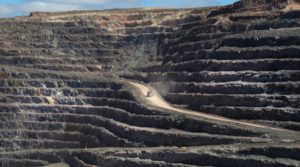In their paper, which was published in the journal Nature Communications, the experts explain that even though gem-quality diamonds are nearly pure lattices of carbon and carry very little information about their ages and origins, lower-grade specimens harbour imperfections in the form of tiny pockets of liquid, which are remnants of the more complex fluids from which the crystals evolved. Thus, by analyzing these fluids, it is possible to determine the times when different diamonds formed, and the shifting chemical conditions around them.
“Up to now, most researchers have concentrated on solid inclusions, such as tiny bits of garnet, to determine the ages of diamonds,” Yaakov Weiss, lead author of the study, said in a media statement. “But the ages that solid inclusions indicate can be debatable because the inclusions may or may not have formed at the same time as the diamond itself. Encapsulated fluids, on the other hand, are the real thing, the stuff from which the diamond itself formed.”
To test their hypothesis, the researchers analyzed 10 fibrous, dirty-looking diamonds from De Beers’ mines in and around Kimberley, South Africa.

In detail, they measured traces of radioactive thorium and uranium, and their ratios to helium-4, a rare isotope that results from their decay. The scientists also figured out the maximum rate at which the nimble little helium molecules can leak out of the diamond —without which data, conclusions about ages based on the abundance of the isotope could be thrown far off.
The team was then able to identify three distinct periods of diamond formation. These all took place within separate rock masses that eventually coalesced into present-day Africa. The oldest took place between 2.6 billion and 700 million years ago. Fluid inclusions from that time show extremely rich in carbonate minerals. The period also coincided with the buildup of great mountain ranges on the surface, apparently from the collisions and squishing together of the rocks. These collisions may have had something to do with the production of the carbonate-rich fluids below.
The next diamond-formation phase spanned a possible time frame of 550 million to 300 million years ago, as the proto-African continent continued to rearrange itself. At this time, the liquid inclusions show, the fluids were high in silica minerals, indicating a shift in subterranean conditions. The period also coincided with another major mountain-building episode.
The most recent known phase took place between 130 million years and 85 million years ago. The fluid composition, in this case, was high in saline compounds containing sodium and potassium. This suggests that the carbon from which these diamonds formed did not come directly from the deep earth, but rather from an ocean floor that was dragged under a continental mass by subduction. This idea, that some diamonds’ carbon may be recycled from the surface, was once considered improbable, but recent research by Weiss and others has increased its currency.
According to the scientists, it was at the end of this most recent period, when Africa had largely assumed its current shape, that a great bloom of kimberlite eruptions carried all the diamonds the team studied to the surface. The solidified remains of these eruptions were discovered in the 1870s and became the famous De Beers mines. Exactly what caused them to erupt is still part of the puzzle.
Another big question mark is whether these findings could help geologists find new diamond deposits. The method, however, could be applied to other diamond-producing areas of the world, including Australia, Brazil, northern Canada and Russia, to disentangle the deep histories of those regions, and develop new insights into how continents evolve.




